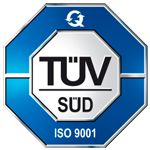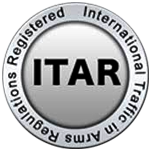Ultimate Guide to Selecting the Perfect Hydraulic Hose Fittings for Your Global Sourcing Needs
As industries worldwide increasingly rely on efficient hydraulic systems, the demand for high-quality Hydraulic Hose Fittings has surged. According to a report by MarketsandMarkets, the global hydraulic fittings market is projected to grow from USD 2.3 billion in 2021 to USD 3.1 billion by 2026, reflecting a robust CAGR of 6.5%. This growth underscores the critical role that selecting the right hydraulic hose fittings plays in enhancing operational safety and productivity.
With numerous options available, from material composition to fitting type, navigating this complex landscape can be daunting for global sourcing professionals. This ultimate guide aims to simplify that process, offering insights and strategies to help you choose the perfect hydraulic hose fittings tailored to your specific needs.
Whether you're in manufacturing, construction, or any application relying on hydraulic systems, making informed choices in fittings can lead to significant improvements in performance and reliability.
Hydraulic Hose Fittings: Understanding Different Types and Their Applications
Hydraulic hose fittings are essential components in fluid power systems, providing secure connections between hydraulic hoses and other components. Understanding the different types of fittings and their applications can significantly enhance the efficiency and effectiveness of your operations. According to a report by MarketsandMarkets, the hydraulic fittings market is projected to grow from USD 4.1 billion in 2020 to USD 5.5 billion by 2025, reflecting a compound annual growth rate (CAGR) of 6.2%. This growth is largely driven by the increasing demand from industries such as manufacturing, automotive, and construction, where reliable hydraulic systems are vital.
There are several types of hydraulic hose fittings, including crimp, screw, and push-on fittings, each catering to distinct applications. Crimped fittings, for instance, are widely used in high-pressure systems due to their robust durability. A report from Research and Markets indicates that crimped hose fittings are favored for their superior ability to withstand extreme conditions, making them ideal for heavy machinery in construction projects. Conversely, push-on fittings are easier to install and are suitable for low-pressure applications, commonly found in agricultural machinery. By selecting the appropriate fitting type based on application requirements, businesses can ensure optimized performance and reduced downtime in their hydraulic systems.
Hydraulic Hose Fittings Types and Applications
This chart illustrates the popularity of various types of hydraulic hose fittings based on their applications in thousands. It highlights the significant demand for SAE and JIC fittings, which are commonly used across multiple industries.
Key Industry Standards for Hydraulic Hose Fittings and Compliance Requirements
When sourcing hydraulic hose fittings globally, understanding key industry standards and compliance requirements is paramount. Various organizations set forth standards that ensure the safety, efficiency, and compatibility of hydraulic systems. For instance, the International Organization for Standardization (ISO) provides widely accepted specifications that manufacturers must adhere to, covering everything from material quality to dimensional accuracy. Adopting fittings that meet these standards helps mitigate risks associated with equipment failure and enhances operational reliability in demanding environments.
In addition to ISO standards, other regulations such as SAE (Society of Automotive Engineers) and DIN (Deutsches Institut für Normung) play critical roles in defining the quality and performance benchmarks for hydraulic fittings. Compliance with these specifications not only ensures that the products will perform optimally under pressure but also simplifies cross-border trade by providing a recognized framework for quality assurance. Thus, keeping abreast of these standards is essential for procurement professionals aiming to select fittings that stand the test of time while meeting global sourcing criteria.
Factors to Consider When Sourcing Hydraulic Hose Fittings Globally
When sourcing hydraulic hose fittings on a global scale, several critical factors must be considered to ensure optimal performance and reliability. Firstly, the compatibility of materials can significantly affect the durability and efficiency of the fittings. According to a report by the International Organization for Standardization (ISO), approximately 30% of hydraulic system failures can be attributed to mismatched materials leading to leaks and component wear. Therefore, understanding the specifications and requirements of your system is imperative when choosing fittings that can withstand the operating conditions they will face.
Another vital factor is the certification and compliance with global standards. The hydraulic hose fitting market is projected to reach $9.3 billion by 2025, driven by the growing demand for high-performance fittings in various industries, including construction and agriculture. In this context, ensuring that the fittings meet international standards such as SAE, DIN, and JIS can enhance safety and reliability. A recent report from MarketsandMarkets highlights that sourcing from suppliers with recognized certifications not only improves product quality but also mitigates risks associated with non-compliance, making it essential for organizations aiming to maintain competitive advantage in the global marketplace.
Ultimate Guide to Selecting the Perfect Hydraulic Hose Fittings for Your Global Sourcing Needs
| Dimension | Material | Pressure Rating (PSI) | Temperature Range (°C) | End Connection Type | Compliance Standards |
|---|---|---|---|---|---|
| 1/4 inch | Steel | 3000 | -40 to 100 | NPT | SAE J514 |
| 3/8 inch | Stainless Steel | 4000 | -50 to 120 | BSP | ISO 8434 |
| 1/2 inch | Aluminum | 2500 | -40 to 90 | JIC | ANSI B31.9 |
| 3/4 inch | Carbon Steel | 3500 | -40 to 85 | ORFS | ASME B16.5 |
| 1 inch | Brass | 2000 | -20 to 90 | Flange | API 16C |
Cost Analysis: Balancing Quality and Price in Hydraulic Hose Fitting Selection
When selecting hydraulic hose fittings for global sourcing needs, cost analysis becomes crucial in balancing quality and price. The recent partnership between HMS Group and a leading hydraulic hose company underscores the importance of investing in high-quality fittings. These components enhance durability and prevent issues such as vibration failure, which can lead to costly unscheduled maintenance. This aligns perfectly with the growing need for efficiency and reliability in fluid handling solutions across various industries.
As the hydraulic hose market is projected to reach significant valuations over the next decade, sourcing decisions require careful consideration of both upfront costs and long-term benefits. Companies must weigh the initial expenses against the performance reliability and maintenance costs. For instance, the adoption of leak-free hydraulic fittings can mitigate risks associated with equipment downtime, making them a worthy investment despite potentially higher prices. By focusing on these cost dynamics, businesses can ensure they select fittings that meet their operational demands without compromising on quality.
Future Trends in Hydraulic Hose Fittings: Innovations and Sustainability Practices
As the demand for hydraulic systems continues to grow across various industries, innovations in hydraulic hose fittings are becoming increasingly crucial. Future trends highlight the integration of advanced materials and designs that optimize performance and enhance longevity. Manufacturers are experimenting with composite materials that offer superior resistance to corrosion and abrasion, significantly improving the durability of hose fittings. Additionally, the shift towards modular systems is simplifying maintenance and repairs, allowing for quicker replacements and reduced downtime.
Sustainability practices are also gaining momentum within the hydraulic hose fittings sector. Companies are prioritizing eco-friendly manufacturing processes, utilizing recycled materials wherever possible, and minimizing waste during production. The adoption of sustainable practices not only supports environmental conservation but also attracts customers who are becoming more conscious of the ecological footprint of their purchasing decisions. Furthermore, the development of bio-based hydraulic fluids and recyclable fittings reflects a broader industry commitment to sustainability, ensuring that hydraulic systems remain efficient while also being environmentally responsible.
NORTH EASTON MACHINE • 218 Elm Street • North Easton, MA 02356 • 508-238-6219

